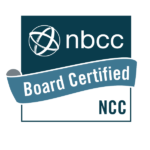For those who suffer with anxiety, it can feel like an endless cycle to alleviate your symptoms. While there are many effective options for easing anxiety, one of the most effective is through progressive muscle relaxation. (PMR)
PMR is a relaxation technique that is highly effective in calming the body done during high moments of stress. In fact, it can even help someone who is experiencing a panic attack.
What is great about PMR is that it can be done by anyone, anywhere! Keep reading to find out what PMR is and then how you can practice it!
PMR Explained
In the 1920’s, an American physican by the name of Edmund Jacobson made an interesting discovery in his patients. Regardless of what illness they were suffering from, all of his patients experienced muscle tension and pain. When he suggested that they relax, most were not aware of the tension in their bodies.
Inspired and wanting to help his patients, Jacobson developed a sequence of steps to help his patients become aware of the tension in their bodies and then release it.
These steps would eventually become known as progressive muscle relaxation.
How PMR Works
PMR is effective because it helps to counteract the flight-or-fight response our bodies have to stress and anxiety. The flight-or-fight response means you either face the stress head on or run away from it.
While this response developed naturally in our ancient ancestors to survive threatening situations, for modern times, it doesn’t serve the same purpose. Our bodies repeatedly activate this stress response to anything that causes us fear, which does more harm than good. The toll it takes on our bodies is great and sometimes endless. Causing anxiety, panic attacks, and so much more. And as Jacobson discovered, yes, even muscle tension and pain.
PMR works to reverse these effects on the body. It promotes relaxation, lowering your heart rate, calming the mind, and reducing tension in the body.
Anxiety can be a vicious cycle that never ends. As our minds begin to stress, it in turn causes our body to stress out. Then as our nervous system goes into overdrive, our minds stress out even further.
PMR helps those to deal with anxiety in a healthier manner. Not only does it help you to find relief in the moment, it can also help you become more aware of how your physical stress affects your mental stress.
How To Practice PMR
Our best advice for learning how to practice PMR is to do it in moments when you are relatively calm. Like so much else in life, practice makes perfect. We always recommend learning these techniques when you are not as stressed. This way, your body and mind learns how to complete the steps. So when you are under stress and need to calm down, you can focus on completing the steps versus trying to learn them at the same time.
To begin, let’s do a simple exercise. Begin by clenching one of your fists as hard as you can(without causing actual pain.) Count to 10, then release your fist completely. You will notice that your hand is much more relaxed than it was before you formed the fist.
Now that you have a taste of what should happen in your body, let’s move to the actual exercise.
1. Inhale deeply, feeling your stomach fill with air. Slowly exhale, feeling your stomach move back towards your spine. Repeat this three to five times.
2. Starting at your feet, clench your toes, pressing your feet to the ground. Squeeze tightly for a few breaths then release. Flex your feet, with your toes pointing upwards towards your face. Hold for a few seconds then release.
3. Moving up your body, focus on tightening and releasing the muscles in this manner group by group. In order, follow these steps to your: feet, legs, butt, stomach, back, arms, shoulders, neck and your face.
Notice how each group is more relaxed after you are done. If you still feel tense in one area, don’t be afraid to repeat this process.
And that’s it!
—
Struggling with anxiety is hard, but you don’t have to do it alone. Feel free to contact me to learn more about anxiety counseling and how it can help you find relief.



